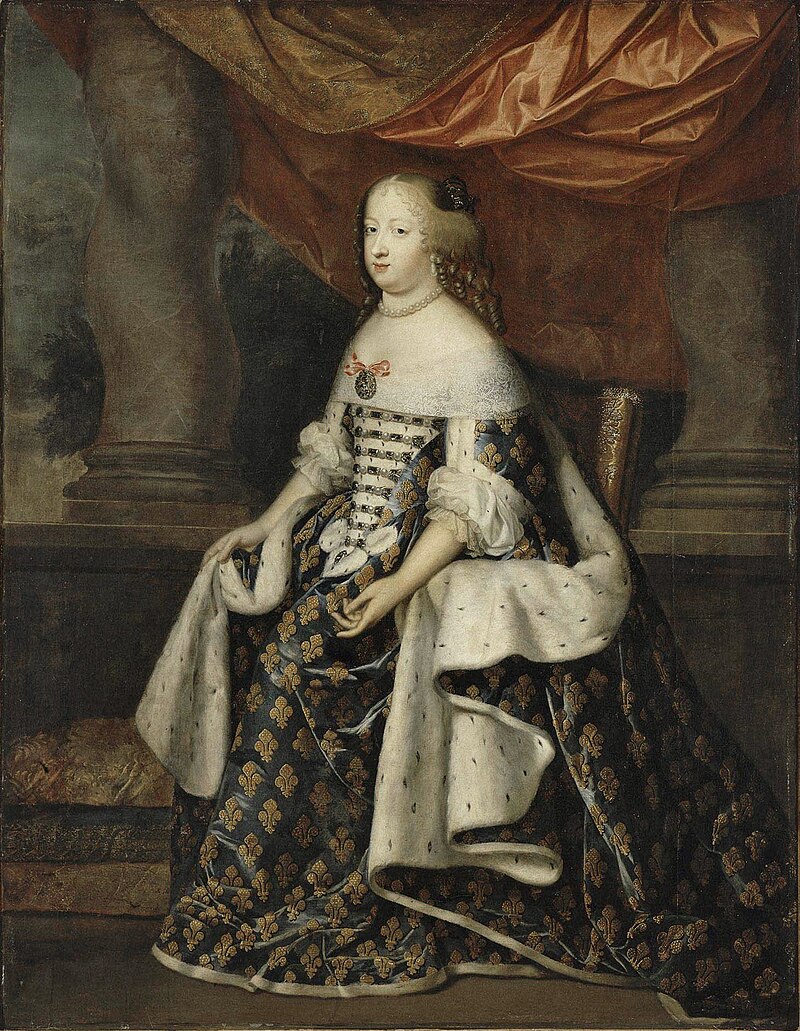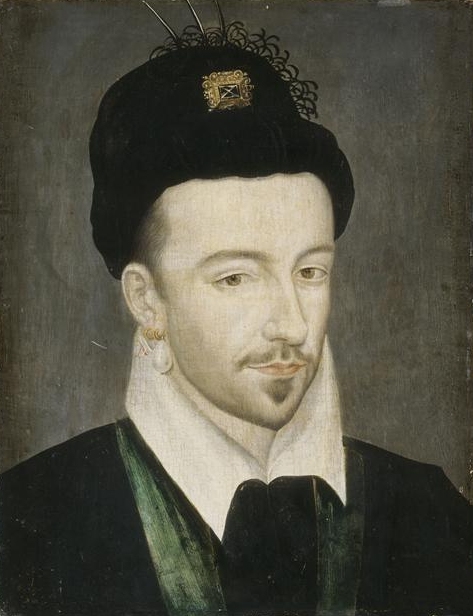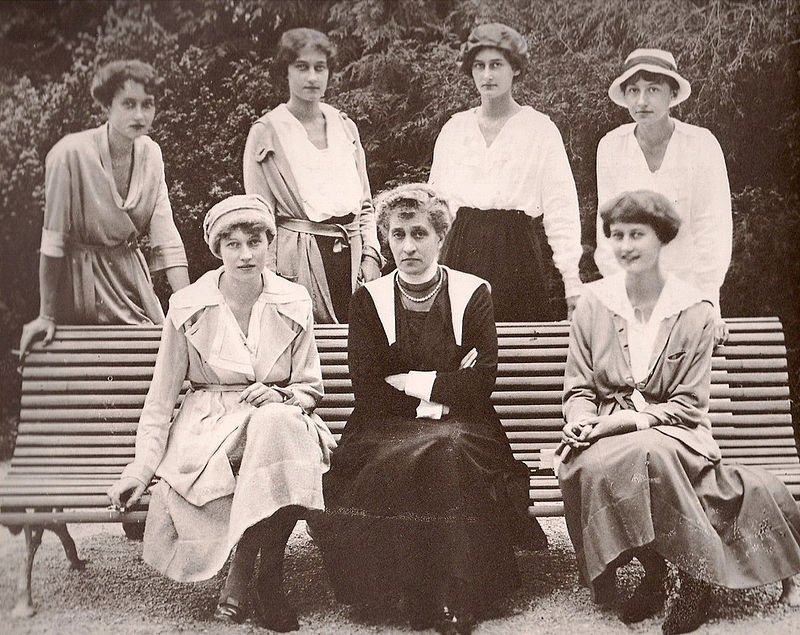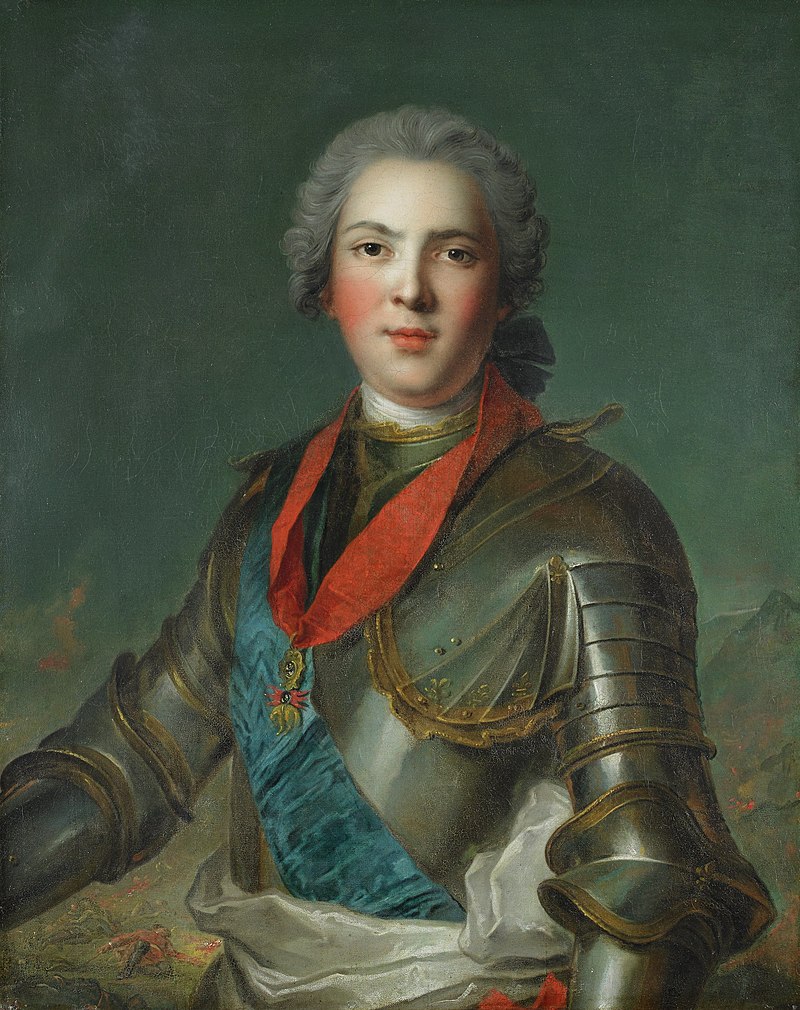© Unofficial Royalty 2023

Maria Theresa of Austria, Queen of France; Credit – Wikipedia
July 30, 1126 – Death of Cecilia of Normandy, Abbess of Holy Trinity Abbey, daughter of King William I of England, at the Abbey of the Holy Trinity in Caen, Normandy, now in France; buried at the Abbey of Holy Trinity in Caen, Normandy
In early childhood, Cecilia was promised as a nun to the abbey her mother Matilda of Flanders founded, the Abbey of the Holy Trinity (also called the Abbaye-aux-Dames, Abbey of the Women), in Caen, Duchy of Normandy. Cecilia had a successful career at the abbey. In 1112, Cecilia became the Abbess of the Abbey of the Holy Trinity. Cecilia died on July 30, 1126, at the Abbey of the Holy Trinity and was buried at the abbey in the choir of the nuns, on the main axis of the church, opposite the choir of the laypeople where her mother Matilda of Flanders was buried. However, Cecilia’s grave is no longer accessible.
Unofficial Royalty: Cecilia of Normandy, Abbess of Holy Trinity Abbey
July 30, 1569 – Birth of Karl I, Prince of Liechtenstein at Valtice Castle in Valtice, Moravia, now in the Czech Republic
Karl I was the first Prince of Liechtenstein and the founder of the Princely Family of Liechtenstein. In 1590, Karl married Baroness Anna Maria von Boskowitz and Černahora. They had four children including Karl I’s successor Karl Eusebius. In 1592, Karl became the treasurer of Archduke Matthias of Austria, a future Holy Roman Emperor. Karl and his younger brothers had been raised in the Evangelical Lutheran faith but they all converted to Catholicism in 1599. Karl’s younger brother Maximilian and his wife founded a Pauline monastery and had the Chuch of the Nativity of the Virgin Mary built on the monastery grounds in the village of Vranov, then in Moravia, now in the Czech Republic. A crypt in the church served as the burial site for members of the House of Liechtenstein until the burial property was seized after World War II by the Communist government of Czechoslovakia. Since then, both Czechoslovakia and then the current Czech Republic has refused to return the property to the Princely Family of Liechtenstein.
Unofficial Royalty: Karl I, Prince of Liechtenstein
July 30, 1683 – Death of Maria Theresa of Austria, Queen of France, wife of King Louis XIV of France, at the Palace of Versailles in France; buried at the Basilica of Saint-Denis near Paris, France
Maria Theresa was the daughter of King Felipe IV of Spain and his first wife Elisabeth of France. As the Spanish monarchs at the time were part of the House of Habsburg, she was styled as Archduchess of Austria, as well as Infanta of Spain and Portugal. She was the first wife of King Louis XIV of France, and gave birth to six children but only one, Louis, Le Grand Dauphin, survived childhood but he predeceased his father. At the end of July 1683, Maria Theresa fell ill, the result of an abscess in her left arm which was not treated correctly. Septicemia quickly set in causing her death.
Unofficial Royalty: Maria Theresa of Austria, Queen of France
July 30, 1700 – Death of William, Duke of Gloucester, son of Queen Anne of Great Britain, at Windsor Castle in Windsor, England; buried at Westminster Abbey in London, England
Queen Anne had 17 pregnancies with only five children being born alive. Two died on the day of their birth, two died at less than two years old within six days of each from smallpox, and William, Duke of Gloucester died at age 11. Some modern medical experts feel that William had hydrocephalus, a condition in which there is an excessive accumulation of fluid in the brain. William celebrated his eleventh birthday at a party held at Windsor Castle. Jenkin Lewis, his servant, reported, “He complained a little the next day, but we imputed that to the fatigues of a birthday so that he was much neglected.” In the evening, William complained of a sore throat and chills. Two days later, he was no better and had developed a fever and was delirious. The doctors suspected smallpox, but no rash appeared, so they used the usual treatments of the time, bleeding and blistering, which no doubt, made William’s condition worse. The 11-year-old duke’s death was the major reason for the passage of the Act of Settlement in 1701 which gave the throne to Sophie, Electress of Hanover and her Protestant descendants.
Unofficial Royalty: William, Duke of Gloucester
Wikipedia: Act of Settlement 1701
July 30, 1769 – Birth of Friedrich VI, Landgrave of Hesse-Homburg, husband of Princess Elizabeth of the United Kingdom, in Bad Homburg vor der Höhe in the Landgraviate of Hesse-Homburg, now in Hesse, Germany
Full name: Friedrich Joseph Ludwig Carl August
While Friedrich was in the military, he showed no inclination to marry. In 1814, 45-year-old Friedrich had met 44-year-old Princess Elizabeth, the third daughter and seventh of the fifteen children of King George III of the United Kingdom at a ball held at the British court. None of George III’s six daughters had been allowed to marry at the age when most princesses would marry. Eventually, three of the six daughters managed to get married. In 1818, Elizabeth read a letter from 48-year-old Friedrich, then Hereditary Prince of Hesse-Homburg to her mother asking to marry Elizabeth. Queen Charlotte was not easily persuaded to agree to the marriage and after heated discussions and interventions from several of Elizabeth’s siblings, the Queen agreed to the marriage. Using Elizabeth’s dowry and annual allowance, the couple built new roads in the Landgraviate of Hesse-Homburg, restored the castles in Bad Homburg and Meisenheim, and became involved in the care of the poor. Using seeds and seedlings from England, they created an English garden at Bad Homburg Castle.
Unofficial Royalty: Friedrich VI, Landgrave of Hesse-Homburg
July 30, 1833 – Birth of Archduke Karl Ludwig of Austria, brother of Emperor Franz Joseph I of Austria at Schönbrunn Palace in Vienna, Austria
Karl Ludwig was the father of Archduke Franz Ferdinand, heir to the Austrian throne, whose assassination in 1914 sparked World War I. In 1889, Crown Prince Rudolf died by suicide at his hunting lodge Mayerling. Rudolf, the only son of Emperor Franz Joseph, had no sons, so the succession passed to Emperor Franz Joseph’s brother Karl Ludwig and his eldest son Franz Ferdinand. There have been suggestions that Karl Ludwig renounced his succession rights in favor of his son Franz Ferdinand. However, an act of renunciation was never formally signed and Karl Ludwig was never officially designated heir to the throne. He was only three years younger than Franz Joseph and not a realistic choice. When Karl Ludwig died in 1896, his son Ferdinand became the heir to his uncle’s throne.
Unofficial Royalty: Archduke Karl Ludwig of Austria
July 30, 1872 – Birth of Princess Clémentine of Belgium, Princess Napoléon, daughter of Leopold II, King of the Belgians and wife of Prince Victor Bonaparte, the Bonapartist pretender to the French throne, at the Royal Castle of Laeken in Brussels, Belgium
Full name: Clémentine Albertine Marie Léopoldine
Clémentine was the third of the three daughters and the youngest of the four children of Leopold II, King of the Belgians and Archduchess Marie-Henriette of Austria. In 1869, when Leopold and Marie-Henriette’s only son Leopold died, King Leopold II blamed Queen Marie-Henriette for their son’s death. Little Leopold had fallen into a pond, caught pneumonia, and died. Hoping for a crown prince because only males could inherit the throne, Queen Marie-Henriette became pregnant again, but the long-awaited crown prince did not materialize as the child was a girl, Clémentine. Clémentine’s parents completely separated after her birth. In 1910, she married Prince Victor Bonaparte, the Bonapartist pretender to the French throne, and the couple had two children. On March 8, 1955, Clémentine died at the age of 82, at her home in Nice, France, the Villa Clairvallou.
Unofficial Royalty: Princess Clémentine, Princess Napoléon
July 30, 1900 – Death of Prince Alfred, Duke of Edinburgh and Saxe-Coburg-Gotha, son of Queen Victoria of the United Kingdom, at Schloss Rosenau in Coburg, Duchy of Saxe-Coburg and Gotha, now in Bavaria, Germany; buried in the Ducal Family’s mausoleum in Coburg Cemetery
Alfred’s father Prince Albert of Saxe-Coburg and Gotha and elder brother, the future King Edward VII of the United Kingdom had both renounced their rights of succession to the throne of the Duchy of Saxe-Coburg and Gotha, leaving Alfred as heir to childless his uncle Ernst II, Duke of Saxe-Coburg and Gotha. The transition to his new position was not easy. The people were mostly against the idea of a British prince being their Duke despite the fact that his father was born a Prince of Saxe-Coburg and Gotha. However, Alfred managed to build up the people’s confidence in him and soon became quite popular.
Unofficial Royalty: Alfred, Duke of Edinburgh and Saxe-Coburg-Gotha
July 30, 1912 – Death of Emperor Meiji of Japan, at the Meiji Palace in Tokyo, Japan; buried in the Fushimi Momoyama Ryo (Graveyard) in Kyoto, Japan; his soul is enshrined in Meiji Shrine in Tokyo, Japan
Since 1185, a shogun, a military dictator, had been the de facto ruler of Japan, although the shoguns were appointed by the Emperor. In 1868, the last shogun lost power, and in the name and with the support of the young Emperor Meiji, a new, more Western-oriented upper class initiated the modernization of Japan known as the Meiji Restoration. Under Emperor Meiji’s reign, Japan started to become an industrial and naval power. The old feudal system was abolished and public state schools were introduced along with the Gregorian calendar. In 1890, the Emperor made the greatest contribution to the modernization of Japan with the enactment of a constitution. Emperor Meiji moved the capital of Japan from Kyoto to Edo (later Tokyo). Although he had little political power during his 45-year reign, he was an important symbol of the unity of the country. Emperor Meiji suffered from diabetes, nephritis, and gastroenteritis, and died of uremia at the age of 59.
Unofficial Royalty: Emperor Meiji of Japan
July 30, 1936 – Birth of Infanta Pilar of Spain, Duchess of Badajoz, daughter of Infante Juan of Spain, Count of Barcelona, sister of King Juan Carlos I of Spain, in Cannes, France
Full name: María del Pilar Alfonsa Juana Victoria Luisa Ignacia y Todos los Santos
In 1967, Infanta Pilar married Luis Gómez-Acebo y Duque de Estrada. The marriage was controversial because Luis was not royal and Pilar had to renounce her rights of succession to the Spanish throne. Infanta Pilar was President of the International Equestrian Federation from 1994 – 2005. She was a member of the International Olympic Committee from 1996 to 2006 and was then an Honorary member. She was also a member of the executive board of the Spanish Olympic Committee. Infanta Pilar died on January 8, 2020, at the age of 83 from colon cancer.
Unofficial Royalty: Infanta Pilar of Spain, Duchess of Badajoz
July 30, 2011 – Wedding of Zara Phillips, daughter of Anne, Princess Royal, and Mike Tindall at the Canongate Kirk in Edinburgh, Scotland
Zara Phillips and English rugby player Mike Tindall first met in 2003 during the Rugby World Cup in Australia. Buckingham Palace announced their engagement on December 21, 2010. The couple was married at Canongate Kirk in Edinburgh, Scotland. Canongate Kirk (kirk = church) is a Presbyterian (Church of Scotland) church located on the Royal Mile which runs between Edinburgh Castle and Holyrood Palace in Edinburgh, Scotland. Members of the British royal family sometimes attend services at Canongate Kirk when they are visiting Edinburgh. A reception followed at the Palace of Holyroodhouse, the official residence of the sovereign in Edinburgh, Scotland.
Unofficial Royalty: Zara Phillips Tindall
Unofficial Royalty: Mike Tindall
This article is the intellectual property of Unofficial Royalty and is NOT TO BE COPIED, EDITED, OR POSTED IN ANY FORM ON ANOTHER WEBSITE under any circumstances. It is permissible to use a link that directs to Unofficial Royalty.
























